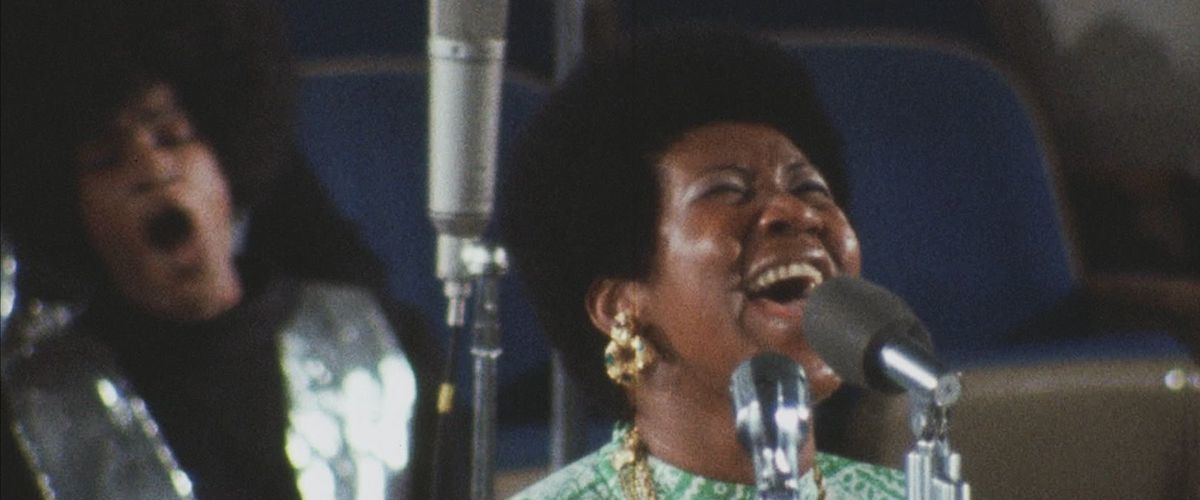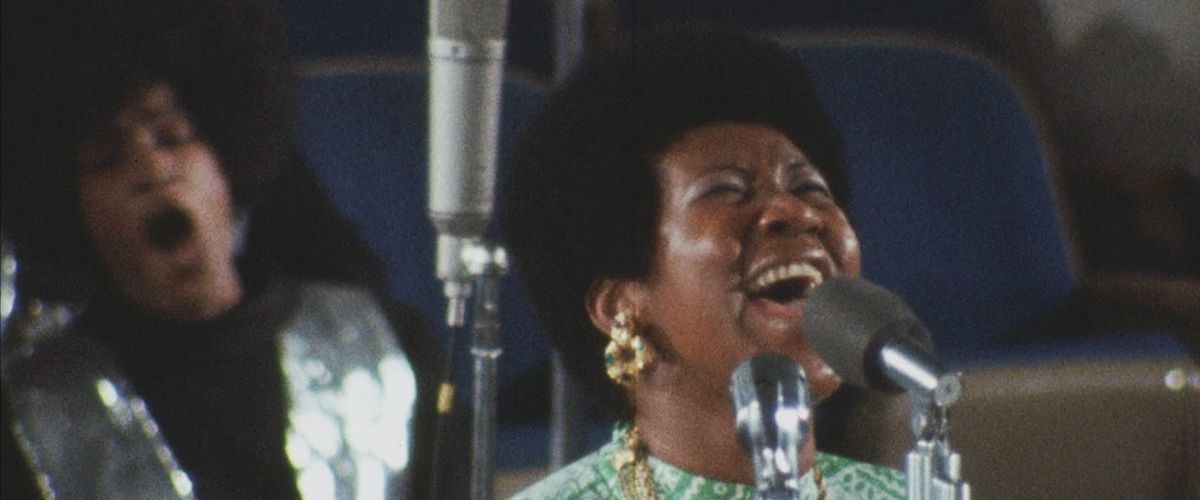Amazing Grace
Presentation of this film was sponsored in part by the Academy of Motion Picture Arts and Sciences through our Diversity in Film Program
Odie Henderson
November 14, 2018
“Amazing Grace” is two days of Baptist church condensed to 90 minutes and injected directly into your soul. Shot in 1972 over a 48-hour period in Watts’ New Temple Missionary Baptist Church, this stirring document captured the live recording of the most successful gospel album in history, Aretha Franklin’s Amazing Grace. At the height of her powers, with 11 number one singles and five Grammys to her credit, she returned to the environment and the music that honed her voice and nurtured her soul. The result became her biggest seller, earning a Grammy and quite possibly more than a few conversions. This film is a powerful love letter to the Black Church, offering a soul-shaking introduction for the unfamiliar and a grandmotherly yank of the arm for those who know—it drags you from the theater straight into the pews.
So I’m here to bear witness. Hear me testify, oh readers. As the son of a minister, this sinner has the Baptist church in his DNA. My Sundays growing up were spent sweating profusely in suit and tie, uselessly fanning myself with popsicle stick paper fans and taking side bets with my cousins on who would get happy in church that day. Years later, I sang in the chwhyuh—to use the preacher pronunciation of the word choir—where I and my tuneful brethren were instructed by the most animated of choir directors. We sang the hymns that every Baptist knows and rode the familiar rhythms and cadences of the service that befell us every Sunday morning. Black church has a soothingly repeated checklist, and though I hadn’t been to worship in at least 25 years (it’s complicated, folks—judge not!), I remembered every item on that list. I sat in the theater gleefully awaiting every single one of them, and I was not disappointed.
Oh yes, “Amazing Grace” is like Sundays at your Baptist church with one major exception: You didn’t have Aretha Franklin as your lead soloist. It’s one thing to listen to her make a joyful noise unto the Lord courtesy of Atlantic Records, but seeing her do it is something entirely different and even more exalting. Those rafters you hear raising on the record now have a visual representation, aided and abetted by Re’s Master of Ceremonies and partner in crime, gospel legend Reverend James Cleveland. Though her entrances into the church on both nights of filming appropriately dripped with a diva’s swagger, Re is for the most part very shy on camera, at least until she starts to sing. She speaks perhaps seven words in the entire film, but don’t mistake that for insecurity. The camera catches her in rehearsal inquiring what key she should be singing in, and when she gets conflicting answers, she hilariously stares daggers at Rev. Cleveland.
Rev. Cleveland is the quintessential pastor, part court jester and part sermonizer, playing to the camera (at one point, he throws a handkerchief at it) and the crowd while maintaining structure and order. Under normal circumstances, he would easily steal the show. But, as he points out, these circumstances are extraordinary, so he happily cedes control to his lead singer. However, Rev. Cleveland figures prominently in the most astonishing moment in “Amazing Grace.” As Re sings the hymn that gives the film its name, the reverend is overwhelmed with emotion, rising from the piano to openly weep on camera. His emotion is genuine, infectious and of course, a perfectly placed interaction with the viewing audience. It’s an understandable reaction as well; Re’s voice is otherworldly in this number. She vibrates as she sings, the camera catching every bead of sweat pouring down her upturned face while her body becomes a radiant beacon beaming out her unshakeable faith.
Providing backup is the Southern California Community Choir, a unisex band of exceptional singers graced with even more exceptional Afros. Directing them in the room where it happens is the aptly named Alexander Hamilton, whose wildly energetic arms and body speak the coded language that every choir member understands. The singers provide memorable call and response backup on songs like the gospel staples “How I Got Over” and “The Old Landmark” the latter of which, you may recall, was sung by Re’s co-star in “The Blues Brothers,” James Brown. They also assist on Re’s heavenly take on Marvin Gaye’s “Wholy Holy.” Several times, I found myself responding to Hamilton’s direction, reading it as if I were still wrapped in the suffocating yet pretty robes I wore back in the day. Again, this movie impeccably and repeatedly connects us with the expected beats the church etches into its parishioners.
On both nights of filming, New Missionary Baptist Church is packed with people dressed in their Sunday best. A few celebrities like Mick Jagger are briefly seen but not formally introduced, but two gospel legends get some well-deserved screen time. The first is Clara Ward, who was a primary influence on Aretha Franklin. The second is Rev. C.L. Franklin, Re’s father, who gives a brief sermon and, in the film’s most tender moment, rises up from his seat to wipe the sweat from his daughter’s face while she sings at the piano. Rev. C.L. Franklin rolls into “Amazing Grace” with as much swagger as his daughter, wielding that old time Baptist minister style that today’s preachers simply cannot touch. Re looks at her father with love, her face reflecting that she’s still Daddy’s Little Girl at heart, and her vulnerability in that moment is as strong as her voice.
Rev. Franklin’s words are followed by his daughter singing the first song she ever recorded, “Never Grow Old,” or, as we kids used to call it in church, “the song where they have to start dragging people out of here.” My viewing partner, Steven Boone, and I exchanged a knowing glance just before the congregation erupted with people catching the Holy Ghost and needing to be restrained. Meanwhile, Re’s singing and her piano playing blew the doors off the joint, creating a moment of transcendence I’ve never experienced in a theater before.
And experiencing this in a theater is a must. You should be struck by lightning by the weird-looking Jesus painting that appears in this movie if—and it’s a big if—you get the chance to see this movie and you watch it alone at home. As aforementioned, this was made in 1972, but the world premiere of “Amazing Grace” was on November 12, 2018. This is because the footage shot by Sydney Pollack and his ubiquitous crew (who don’t even try to be inconspicuous on camera) was nearly impossible to sync with sound due to a major technical mistake. As a result, the footage sat in a vault at Warner Bros. for 35 years before being taken up as a project by producer Alan Elliott. With Pollack’s death in 2008 and numerous bouts with red tape and lawyers, it took another 11 years before the public set its eyes on the finished product. For now, the film is without a distributor, but there’s cautious optimism about a general release.
Whether you’re religious or not, you owe it to yourself to see this movie if the chance arises. You’ll see how much love and feeling went into the construction of the resulting album. Additionally, “Amazing Grace” is profoundly moving and extraordinarily soothing. Nowadays we could use a good salve. To paraphrase another gospel standard, if we ever needed this film before, we sure do need it now.





